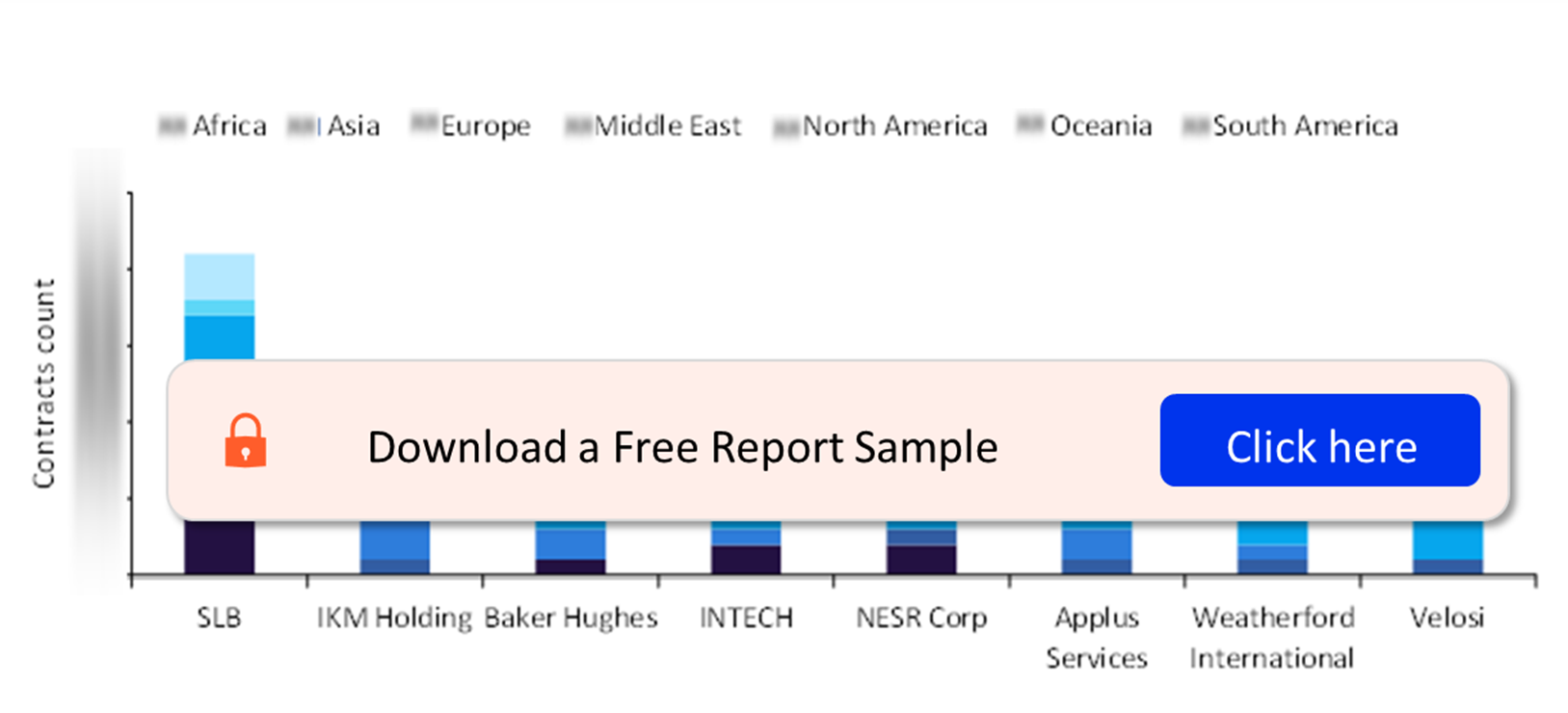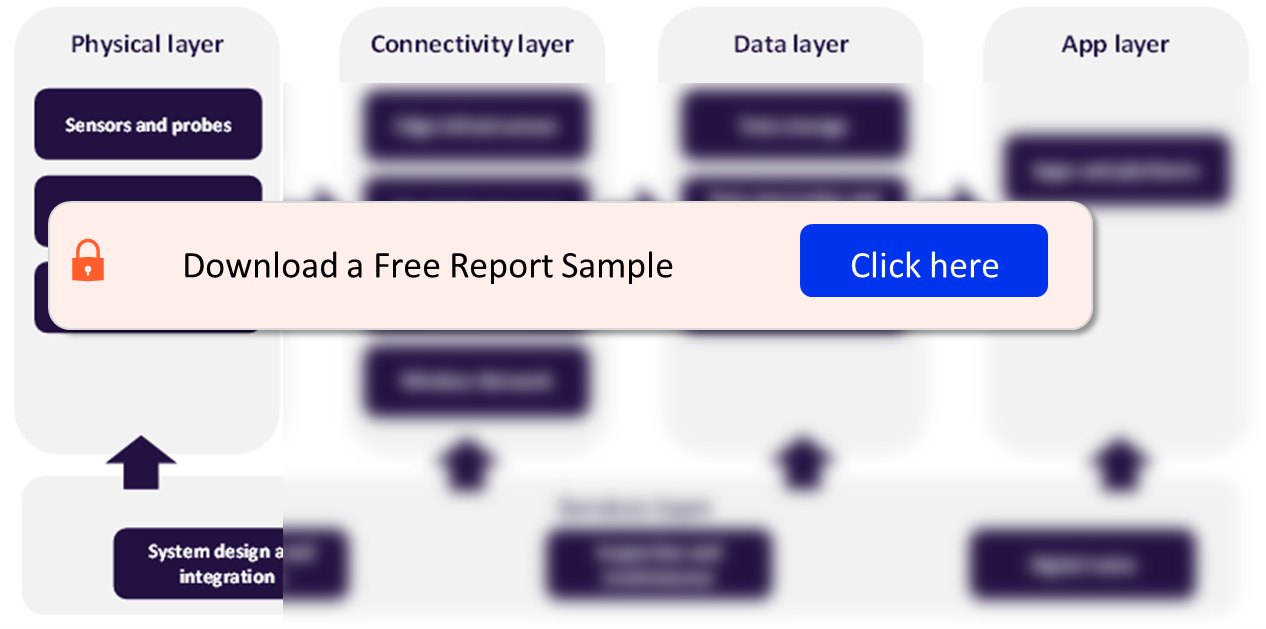Predictive Maintenance in Oil and Gas – Thematic Intelligence
Powered by ![]()
All the vital news, analysis, and commentary curated by our industry experts.
Predictive Maintenance in Oil and Gas Thematic Report Overview
Predictive maintenance technologies are conducive to competitive energy market scenarios. Predicting equipment breakdown and undertaking timely maintenance work not only improves operational efficiency but also enhances workplace safety by avoiding mishaps. Additionally, it helps maximize the operational lifespan of equipment and infrastructure by using an innovative data-driven approach to assess the state of the field equipment or infrastructure and provide details of its expected operating life. This enables decision-makers to schedule maintenance activities without affecting normal functioning. It also helps prevent unwanted leakages that contribute to emissions, thus assisting oil and gas companies to efficiently fulfill their ESG obligations. International cooperation between the government and oil and gas companies would greatly aid decarbonization.
Predictive maintenance strategies have evolved in the oil and gas industry and have gradually harnessed newer digital technologies to build improved prediction models. For instance, TotalEnergies has used predictive maintenance in its upstream operations. In 2022 alone, TotalEnergies responded to over 400 alerts with immediate corrective actions.
The “Predictive Maintenance in Oil and Gas” thematic intelligence report gives you an in-depth insight into the use of predictive maintenance technologies across the three stages of oil and gas exploration activities and their importance in the industry. The report identifies the key market trends that will shape the predictive maintenance strategies in the oil & gas industry over the coming years. It also covers value chain insights, sectoral scorecard analysis, market players, and the competitive landscape within the theme.
| Report Pages | 48 |
| Regions Covered | Global |
| Value Chain Components | · Physical Layer
· Connectivity Layer · Data Layer · Services Layer · Apps Layer |
| Key Trends | · Oil & Gas Trends
· Technology Trends · Macroeconomic Trends |
| Leading Oil & Gas Companies | · Abu Dhabi National Oil Company (ADNOC)
· British Petroleum · Chevron · China National Petroleum Corporation (CNPC) · Equinor |
| Leading Oilfield Services Companies | · ABB
· Aker Solutions · Baker Hughes · Halliburton · National Oilwell Varco |
| Enquire & Decide | Discover the perfect solution for your business needs. Enquire now and let us help you make an informed decision before making a purchase. |
Predictive Maintenance in Oil and Gas – Market Trends
The primary trends that will influence the predictive maintenance theme in the oil and gas industry over the next 12 to 24 months are classified into technology trends, macroeconomic trends, and oil & gas trends.
- Oil & Gas Trends: The incorporation of predictive maintenance technologies in the oil and gas industry will help streamline maintenance tasks, secure aging infrastructure, and tackle the shortage of skilled workforce by collaborating with technology vendors for internal workforce skill development.
- Technology Trends: The key technology trends impacting the predictive maintenance theme in the oil and gas industry are the growing adoption of a digital twin to improve maintenance decisions, the use of wearable technology to visualize operational scenarios, the adoption of IoT solutions, and data analytics to provide actionable insights.
- Macroeconomic Trends: Predictive maintenance can help with ESG compliance and identify weak points in the oil and gas infrastructure to provide extra protection in a geopolitically charged environment.
Buy the Full Report for More information on Predictive Maintenance in the Oil and Gas Industry Trends, Download a Free Report Sample
Predictive Maintenance in Oil and Gas – Industry Analysis
The oil and gas industry witnessed a windfall in revenue in 2022. Major companies, such as BP, Chevron, and Saudi Aramco have reported over 50% growth in 2022 revenues as compared to the previous year. These companies can potentially redirect this money to enact a predictive maintenance strategy in their operations.
The predictive maintenance in oil and gas industry analysis also covers:
- Predictive maintenance in the upstream sector
- Predictive maintenance in the midstream sector
- Predictive maintenance in the downstream sector
The use of predictive maintenance technologies in conjunction with digital twins could provide safety and security for upstream operations. Efforts to deploy predictive maintenance in the upstream sector can be gauged by the work contracts awarded in recent years.
Upstream Predictive Maintenance Contracts, Jan 2018 – Nov 2023
Buy the Full Report for More information on Predictive Maintenance in the Oil and Gas Industry Analysis, Download a Free Report Sample
Predictive Maintenance in Oil and Gas – Value Chain Analysis
Predictive maintenance is equally important for upstream, midstream, and downstream sectors of the oil and gas value chain. The predictive maintenance value chain can be categorized into the physical layer, connectivity layer, data layer, services layer, and app layer.
Physical Layer: It primarily includes manufacturers producing hardware that collect and analyze data on machine vibrations, heat signatures, metrology, and several other metrics. The companies that cater to this segment include makers of semiconductors and electronic devices (such as sensors, transducers, probes, and thermal imaging systems).
Predictive Maintenance Value Chain
Buy the Full Report for More Predictive Maintenance Value Chain Insights, Download a Free Report Sample
Competitive Landscape
A few of the leading oil and gas companies associated with the predictive maintenance theme are:
- Abu Dhabi National Oil Company (ADNOC)
- British Petroleum
- Chevron
- China National Petroleum Corporation (CNPC)
- Equinor
A few of the leading contractors associated with the predictive maintenance theme are:
- ABB
- Aker Solutions
- Baker Hughes
- Halliburton
- National Oilwell Varco
Buy the Full Report for More Insights into the Leading Oil & Gas Companies Associated with Predictive Maintenance, Download a Free Report Sample
Scope
This report explores the use of predictive maintenance technologies in the oil and gas industry.
It establishes a predictive maintenance value chain for the oil and gas industry and identifies key players across this value chain.
It offers contracts analysis of maintenance activities across upstream, midstream, and downstream sectors of the oil and gas industry.
The report provides an overview of the competitive positions held by oil and gas companies, and oilfield services companies in the predictive maintenance theme.
Reasons to Buy
- Identify recent industry, technology, and macroeconomic trends in the predictive maintenance theme.
- Identify growth opportunities for oil and gas industry players in the hydrogen economy.
- Identify and benchmark key oil and gas companies and their role in the predictive maintenance theme.
- Identify and benchmark key oilfield services companies participating in the predictive maintenance value chain.
Table of Contents
Frequently asked questions
-
What are the key technology trends impacting the predictive maintenance theme in the oil & gas industry?
The key technology trends impacting the predictive maintenance theme in the oil and gas industry are the growing adoption of a digital twin to improve maintenance decisions, the use of wearable technology to visualize operational scenarios, the adoption of IoT solutions, and data analytics to provide actionable insights.
-
What are the key oil & gas industry trends impacting the predictive maintenance theme?
The incorporation of predictive maintenance technologies in the oil and gas industry will help streamline maintenance tasks, secure aging infrastructure, and tackle the shortage of skilled workforce by collaborating with technology vendors for internal workforce skill development.
-
What are the key components of the predictive maintenance value chain?
The predictive maintenance value chain can be categorized into the physical layer, connectivity layer, data layer, services layer, and app layer.
-
Which are the leading companies making their mark within the predictive maintenance theme in the oil and gas companies?
A few of the leading oil and gas companies associated with the predictive maintenance theme are Abu Dhabi National Oil Company (ADNOC), British Petroleum, Chevron, China National Petroleum Corporation (CNPC), and Equinor among others.
-
Which are the leading contractors making their mark within the predictive maintenance theme?
A few of the leading contractors associated with the predictive maintenance theme are ABB, Aker Solutions, Baker Hughes, Halliburton, and National Oilwell Varco among others.
Get in touch to find out about multi-purchase discounts
reportstore@globaldata.com
Tel +44 20 7947 2745
Every customer’s requirement is unique. With over 220,000 construction projects tracked, we can create a tailored dataset for you based on the types of projects you are looking for. Please get in touch with your specific requirements and we can send you a quote.
Related reports
View more Oil and Gas reports












